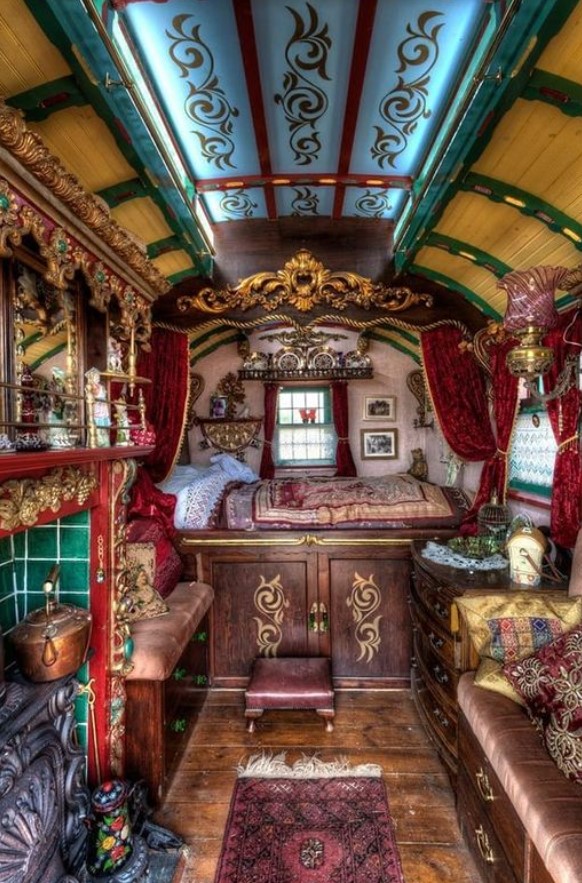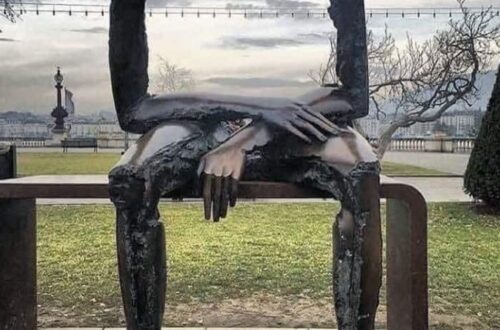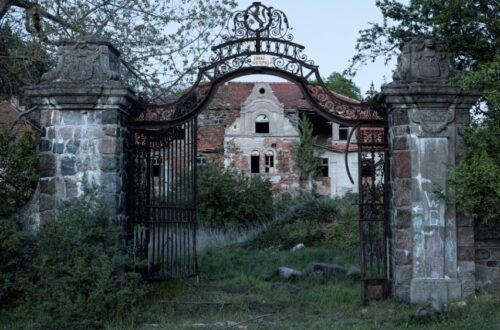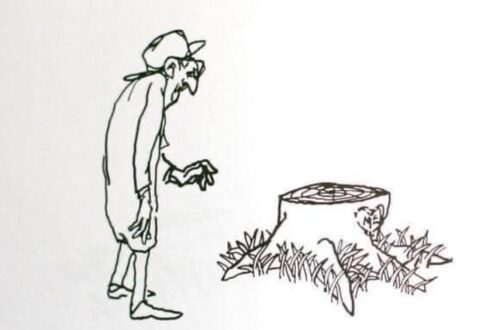The Romani were a group of people who arrived in Europe from northern India around the 14th century. Their travels in wagons much like the Roth’s took them across the continent to Great Britain and even into North America, Brazil and Australia. Many of the Romani groups traveled and lived in these wagons which they called a vardo, waggon, van or caravan. They were traditionally horse-drawn and decorated and painted in bright colors with gilded accents. The British Romani during the mid-1800s to the early 20th century were thought to have the most artistic designs.
The Roth’s caravans feature Victoria’s decorative painting skills and decor which includes using silk, satin, velvet and lace. The couple do all the construction, carving and painting of their caravans. Their designs are not meant to travel down the road, but Wally and Victoria offer their works of art as a tiny home, guest house, art studio, meditation or healing space or just a wonderful addition to a backyard.
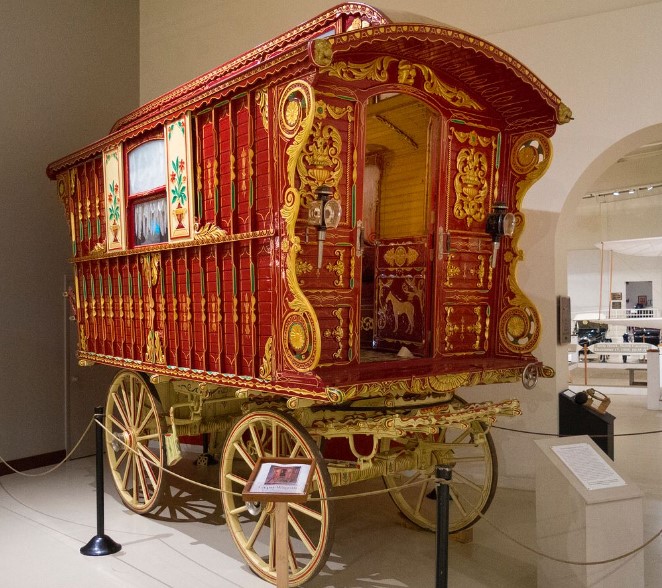
Design
A vardo’s design includes large wheels set outside the body, whose sides slope outward considerably as they rise toward the eaves. Beyond this characteristic, the six types of caravans differ in shape, size, placement of the wheels relative to the bed, where made, and maker. The roofs of the bow-top and open-lot types are canvas stretched over curved wooden frames; the others are roofed in wood. By the mid-1800s, the designs were almost entirely standardized, and some features are common to all types. The door is almost always in the front.
The small cast-iron cooking stove was invented in America and was available there and in Great Britain from about 1830 on and is a common fixture of the wagons. A cooking stove necessitates a chimney to vent smoke. A caravan’s chimney is always on its left side as viewed from its front doorway; as the caravan travels along the left side of the road, the chimney is in less danger from low-hanging tree limbs in that position. The stove rests in a wooden fireplace.
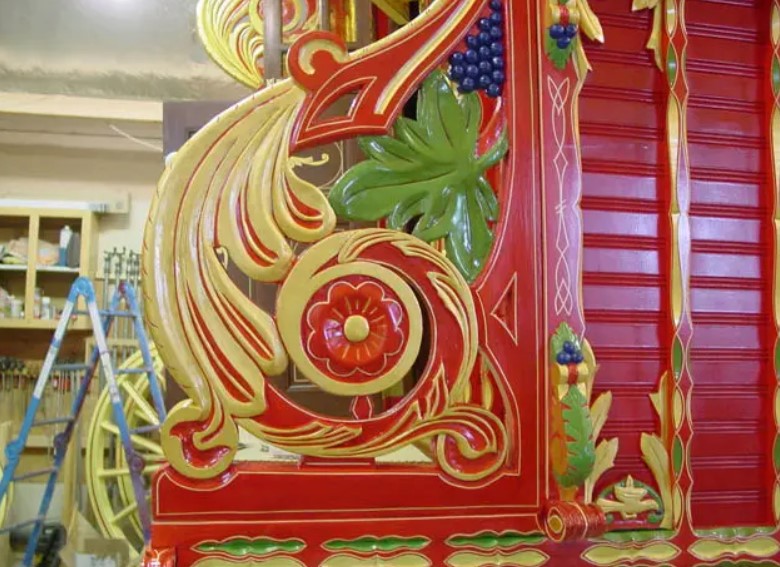
Decoration and painting
Door carving of a traditional Romanichal Chiriklo (bird). Reading vardo, early 20th century
Vardos were elaborately decorated, hand carved and ornately painted with traditional Romani symbols. Examples of famous Wagon Artists responsible for the early development of vardo art are Jim Berry, John Pockett, Tom Stevens, Tommy Gaskin, John Pickett, modern contemporary decorators continuing to shape this colourful tradition included artists such as Yorkie Greenwood and Lol Thompson.
Much of the wealth of the vardo was on display in the carvings, which incorporated aspects of the Romani lifestyle such as horses and dogs, as well as stock decorative designs of birds, lions, griffins, flowers, vines and elaborate scrollwork. Carved details were often accented with gold, either painted or, in the most expensive wagons, the use of between 4-15 books of gold leaf applied as decoration. Many individual makers were identified by their particular designs.

